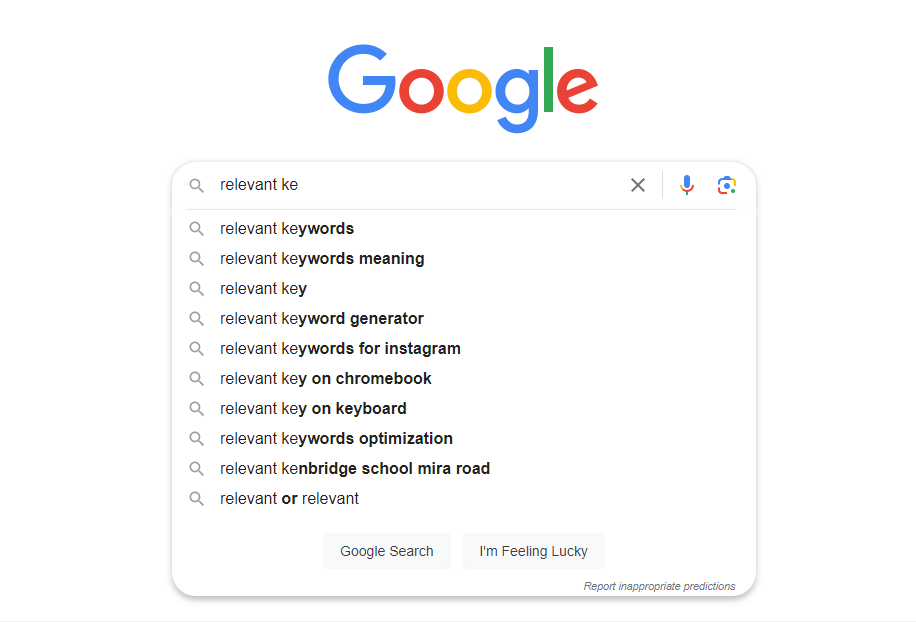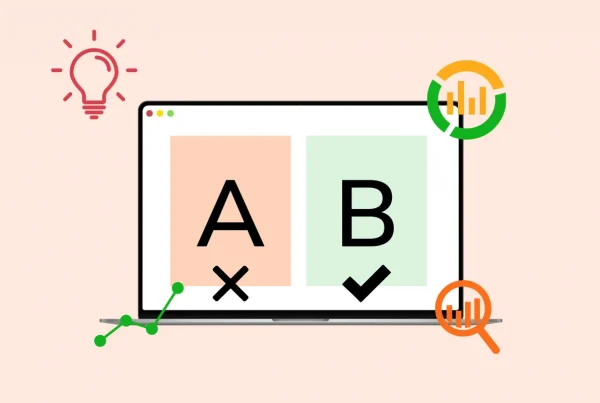Blog article
How do I find relevant keywords?
Estimated reading time: 7 minutes

So you have a great website design. You also have the perfect products, structure, and content. But what about those fabled and relevant keywords we always talk about?
In this article, we will reveal:
- Basics about keywords and keyword research
- When in doubt, how to choose your main keyword
- How to convert visitors into buyers with the help of exact match long-tail keywords
What are keywords and why are keywords important?
Keywords are the gateway from your landing pages to Google’s SERPs (search engine result pages). Every landing page should have a clear focus and theme embodied by the primary keyword.
A primary keyword is the most important keyword on the page. It should be prominently shown in the most important places on the web page such as the page title and the H1. You should also try to scatter it numerous times throughout your page content.
What we are trying to achieve here, is to make the theme of the page clear to Google. Let’s say we have developed an amazing soap to clean kitchens with, and we have created a product page for it—so what should the primary keyword be? Should it be the names of the chemicals used in the soap or should it contain variations of soap, kitchen and cleaning?
About keyword research
Now that we have agreed on the keywords, we still need to decide exactly what they should be. This is where keyword research comes in.
It makes sense to use the same language as your target audience. If instead of “soap for the kitchen” people simply use “dish soap”, that should be your main keyword.
However, in practice, it’s not that simple. To find this perfect primary keyword, we need to use some helpful tools. Some of the popular ones include Google’s keyword planner, SEMrush, Ahrefs, MOZ Keyword Explorer, Ubersuggest and keywordtool.io. At Verbolia, we’ve also developed custom tools to find keywords specific for the industry most of our clients are situated in. This allows us to find keywords that the popular tools won’t find.
We mainly use keyword research tools to find the following 3 things:
- Find new keyword suggestions: similar keywords or synonyms you could rank for
- Monthly search volume: how many times per month users search for a given keyword
- Keyword difficulty: how hard it is to rank for the given keyword
The overall goal is to determine relevant keywords with a solid search volume and low difficulty. It is possible to rank for competitive keywords, but you will need many SEO factors to work to your advantage. Some of those factors are high domain authority and good website traffic—and that’s not something you get overnight.
SEO keyword research in practice: choosing the right one
In our simplified example, we are going to check what queries people use to search for “kitchen soap.”
We might find that “kitchen soap” has 200 searches per month. But then, thanks to the keyword suggestions, we see that “dish soap” has 500 searches per month.
It seems like a no brainer, right?
Well, there are a couple more things we need to make sure of before we choose our golden keyword.
First, relevancy is of the utmost importance. If our product isn’t “dish soap”, then there is no reason to optimize for it.
Ranking number 1 for that term will only send irrelevant traffic to our webpage.
Now you’re probably wondering: but traffic is something we’re looking for, aren’t we?
That’s right. However, the conversion numbers would be abysmal. Google will quickly realize that the landing page is not a relevant result for “dish soap” and will ultimately drop our ranking.
In short, if you cannot decide between 2 keyword variations, always choose the most relevant one.
Traffic is great, eventually, but conversion is better. It’s better to have a 5% conversion rate on 200 searches per month rather than 0.01% on 500 searches.
What else is there to know? Long-tail keywords!
The concept of short-tail vs long-tail keywords isn’t new, but is certainly growing in importance.
So what do we mean by short tail (top tail) and long tail?
Well, these terms represent roughly how focused a query is. A very broad query such as “car” is considered a top tail and bears a high search volume.
On the other hand, long-tail queries look more like this: “red ford F150 model 2015”. There will be far less search volume on this one, but be assured that whoever types it in is interested in that particular model.
So, in contrast to the top-tail query, it’s clear that there is more specific information in long-tail queries. That means we can better assume intent behind a long-tail keyword.
In addition, long-tail keywords account for a large part of all web searches. It is estimated that 70% of search queries are made with long tail keywords and 15% are unique and never been searched before. The conversion is in the vast majority better than with short tail keywords.
In the case of cars, when someone is looking for a specific model, year and color, there’s a chance that this person is looking to buy one. Or at least there is more chance than if someone merely types in “car”, which, in that case suggests that they might just be looking for general information about cars.
How can I use long-tail keywords?
Long-tail keywords can be used in various ways. Usually, finding long-tail queries means that your users are searching for those specific terms or asking themselves those particular questions.
In our “car” example, you might need to build a “car” category page and list all your cars for sale there.
But what if you have a couple of hundred cars for sale?
Maybe you always have several red ford F150 for sale. In that case, it might be smart to create a separate page about your “red ford f150” for sale. In that way, Google will have a chance to direct users to your specific page rather than your more generic “car” page.
When searching for keywords, however, it is important to be careful to duplicate or overly similar keywords. For example you could find “red ford fiestas” and “red for fiesta” during your keyword research. Both reflect the same search intention.
Another useful tactic to take advantage of long-tail keywords is to find frequently asked questions around your type of product and implement them on your landing page.
For example, you want to create your “car” page and you realize that many people are asking the question “what is the most environmentally friendly fuel for cars?”.
It might be a good idea to add this long-tail query on your page and answer it directly when collating your content.
Conclusion
When you search for keywords, consider what your page is really about.
Figure out what you think is the most relevant keyword for your page and test your idea with tools, finding keyword suggestions and search volumes.
Then, choose the most relevant keyword with the highest search volume and add it in strategic places on your webpage.
Finally, don’t forget about long-tail queries.
About The Author
How can Verbolia help your e-commerce platform.


